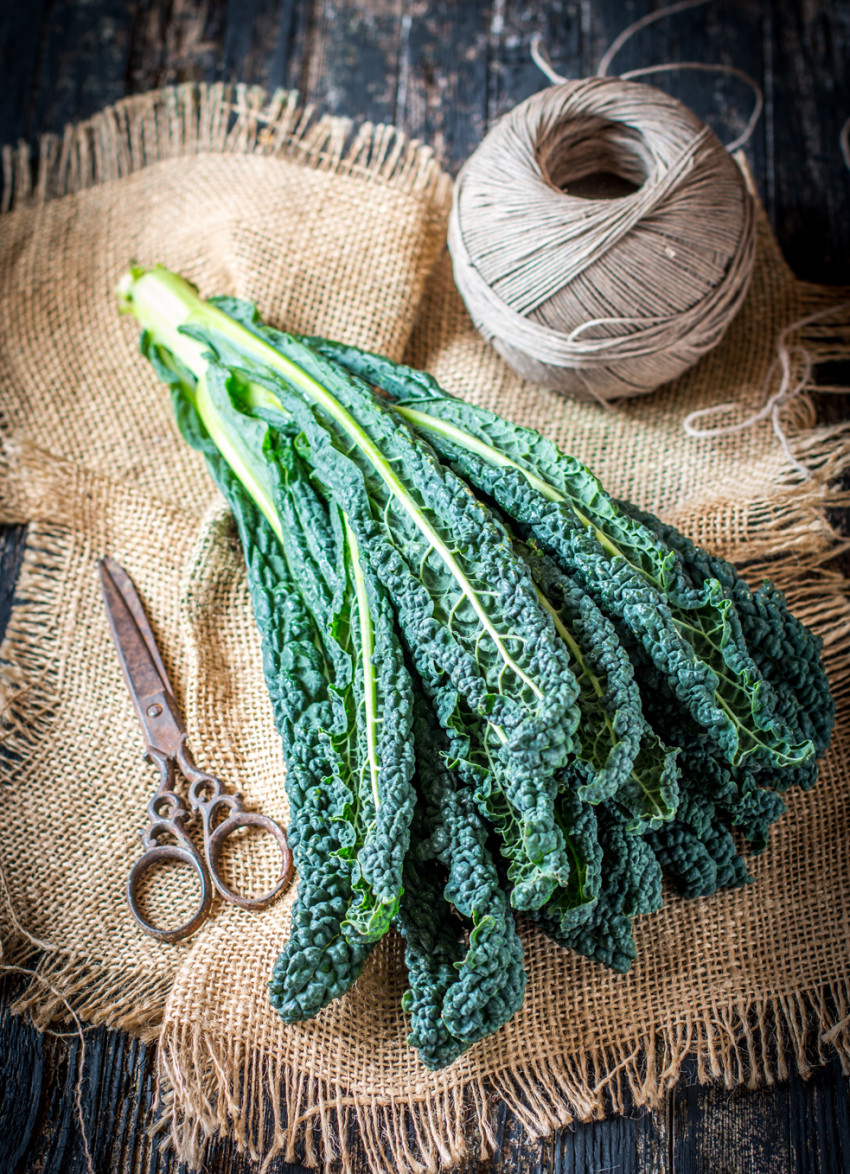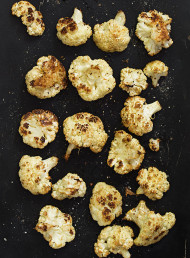In season: cavolo nero

A member of the brassica family and a cousin to kale, cavolo nero is a nutritious winter vegetable. Julie Biuso plates up this versatile Italian favourite.
If I started this column by saying cavolo nero is really good for you, you might switch off because you most likely know that and repetitive messages, even when well meant, are boring. How about versatility? Price? Availability? Taste? I’ll start on taste because even though it’s the hardest point to sell about a cabbagey vegetable, once you understand how to make it taste great you’ll find yourself putting it in your shopping basket on a regular basis and you’ll be the better for it. Job done.
Unlike regular cabbages that form a head, cavolo nero shoots up a thick stalk about a metre high and the bluey-green bubblewrap-textured leaves fan out like majestic plumes. It’s a great vegetable for home gardeners because it’s hardy, likes a frost and you can pick off the leaves as required rather than harvest a whole plant at once. It’ll keep chugging away throughout winter, have another burst in spring, and might even keep producing through summer. Unfortunately, come summer, it’s hello to the white butterfly. A hungry green caterpillar can strip the leaves off a plant overnight, leaving naked leaf ribs and nothing to pick.
It’s interesting that even caterpillars don’t attempt eating the centre ribs of the leaves. When preparing cavolo nero, whip a sharp knife along the sides of the rib on each leaf and lop off the leafy part; discard the ribs because no amount of cooking will make them tender. Wash leaves in plenty of cold water as they can hide critters, shake dry and chop coarsely.
There are several ways to cook cavolo nero. The easiest is in soup. The Tuscans love it in ribollita, which translates as “reboiled”. Hold on – I know that doesn’t sound appetising, but the Tuscans know how to make much of very little. Cannellini beans, tomatoes, onions and cavolo nero are cooked down to make a flavoursome soup.
It tastes petty good the day it is made but it tastes a whole lot better when reheated (reboiled) the next day. The cabbage turns dark when cooked this way (hence the name black cabbage). Dressed with a generous glisten of olive oil, ribollita is satisfying and life giving.
Cavolo nero can be steamed or boiled, or cooked gently in reducing stock until tender. Here’s my classic way: cook for about 7 minutes in boiling salted water (or around 10 minutes for mature leaves). Drain well and finish off in a pan with heated extra virgin olive oil, sliced garlic and chilli – just a few swishes around in the oil to coat the leaves will do it – then dish immediately. Fabulous. I grow an inch every time I eat a bowl of it.
You can add more ingredients. Lemon zest is good with fish. Fennel seeds work with pork chops or cutlets. Squish some anchovies in the oil with garlic and chilli and finish with a shower of grated parmesan and serve with good sausages. Or team with sizzled bacon and a jot of smoked paprika. It’s also good served on top of garlicky bruschetta, especially when spread with a quick bean purée and topped with sizzling bacon, or on a mound of steaming cheesy polenta.
Swishing cooked cavolo through fried butter with fresh herbs like marjoram is another take, or sizzle chopped rosemary and garlic together, let the butter brown off, then swirl through cavolo nero. Add a squeeze of lemon and serve with roast chicken or lamb.
As long as you follow the rules you’ll have success. You can blanch it ahead of serving, making it fast to finish off in hot oil and seasonings. (If using anchovies, soften them in the oil until they dissolve before heating and adding cabbage.)
Then there’s potato mash. Make a fluffy buttery potato mash and whip through cooked well-drained cavolo nero. Add grated cheese, or sprinkle it on top. Even better, make a steaming pot of colcannon with cavolo nero: simmer chopped spring onions in cream and milk until soft, beat into hot mashed potato with cooked and drained cavolo nero, then finish with a large lump of butter – way more than is good for you – and let it slowly melt and anoint the puree with all its golden gorgeousness. If you are unacquainted with the joys of cavolo nero I think this is a great starting point.
And what about its other assets? What to look for when buying it, how to store it, how long does it stay fresh? In a nutshell, it should be bouncy, weighty for its size, quite perky. Store it in an unsealed plastic bag in the vegetable crisper and use as soon as you can – although, if nice and fresh when it’s purchased, it will store for about a week. Just get cooking it because it tastes great, it’s versatile and of course, it’s truly good for you.
latest issue:
Issue #120
As the days become shorter, and the nights cooler, the latest issue is perfectly timed to deliver delicious autumn dishes. From recipes using fresh seasonal produce such as feijoas and apples, to spectacular soothing soups and super-quick after-work meals in our Food Fast section, we’ve got you covered. With Easter on the horizon, we feature recipes that will see you through breakfast, lunch and dinner over a leisurely weekend holiday, and whip up chocolatey baking treats sure to please. We round up delicious dinners for two and showcase a hot new Korean cookbook before heading south to Dunedin to check out all that’s new in food and dining.The latest issue of dish is on sale NOW at all good bookstores and supermarkets – don’t miss it!





